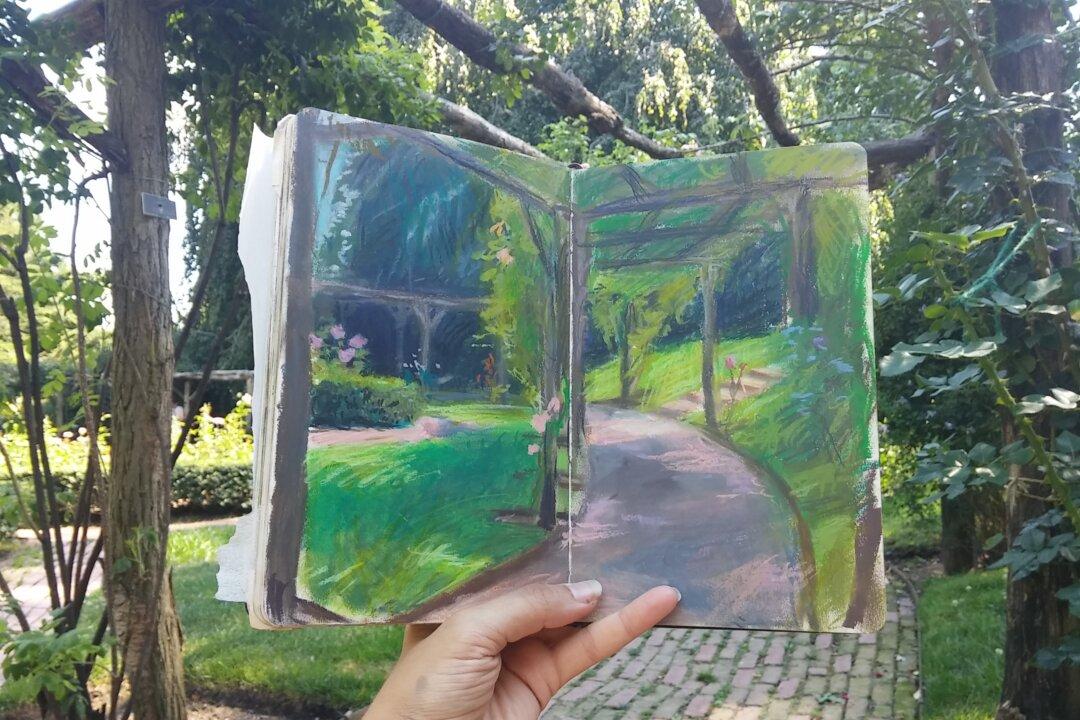NEW YORK—A medieval illuminator painted a giant in a book so tiny that you could potentially grasp it in one hand. But it’s not just any giant. This is a depiction of the saintly Christopher as he warily ferries the Christ child across a river. Legend has it that with each step the giant took, he felt the weight of the child becoming heavier and heavier, until finally he had to ask why. The Christ child, who himself was carrying a globe, answered: “Don’t be surprised, Christopher! You were not only carrying the whole world, you had him who created the world upon your shoulders.”
The medieval artist Simon Bening painted the giant to be barely an inch tall and the child even smaller. This treasure evokes wonderment as it conveys a world within a world, which is within our world as we look upon it. In other words, it represents the world we live in and the universe in a microcosm. But it can also represent an emotional state. The painting of the giant is comforting because it is so small. Upon seeing it, you realize that the overwhelming feeling of carrying the whole world on your shoulders can be contained, grasped, and understood.






